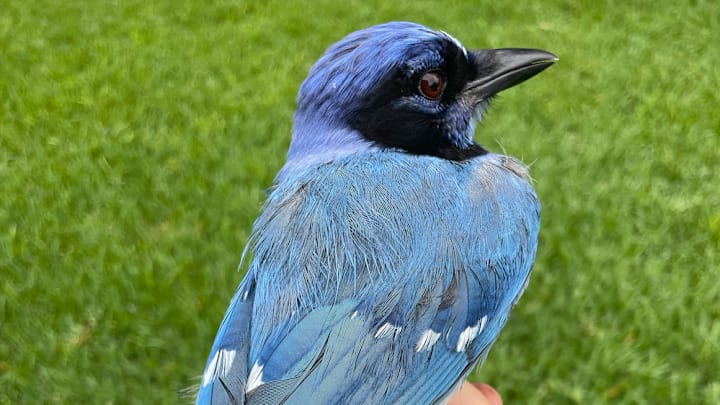Climate change has been linked to numerous environmental problems in recent years, ranging from mercury-contaminated seafood to rust-colored Alaskan rivers. Now, scientists suspect it could be a factor behind a rare hybrid bird spotted in Texas. The discovery is spotlighted in a recent study published in the journal Ecology and Evolution.
Meet the Hybrid Jay

According to ABC News, a resident of San Antonio, Texas, first noticed a bird with a distinct pattern in 2023 and shared a picture of it on various bird enthusiast Facebook groups. Brian R. Stokes, a Ph.D. candidate in the Department of Integrative Biology at the University of Texas and the study’s lead author, couldn’t help but notice its strange neck and face coloration. Although the bird resembled a blue jay, it had the facial markings of a green jay.
Stokes and his colleagues decided to contact the photographer for help tracking down the bird. After catching the animal, they took a blood sample for DNA testing. It was indeed the offspring of a blue jay and a green jay—not just a blue jay with a genetic mutation resulting in the color difference. They found that the mother was a green jay and the father a blue jay.
You May Also Like:
- Why Do Seagulls Hang Out in Parking Lots?
- 9 Astounding Facts About Bird Migration
- 28 Bizarre Facts About Animals That Will Make You Go “WTF?”
Add Mental Floss as a preferred news source!
Stokes told ABC that climate change likely played a role in the pairing, as the two species weren’t always in proximity. Years ago, green jays were primarily found near the Texas-Mexico border. They’ve since expanded northward about 200 miles in Texas, likely to chase cooler temperatures. Blue jays, meanwhile, have expanded their range to west of Houston. In addition to the warming climate, human land development has also forced the birds out of their typical range.
The newly-identified “grue jay” isn’t the only hybrid species borne out of new habitat overlaps. Numerous “grolar bears”—a crossbreed of grizzlies and polar bears—have been spotted over the past decade.
